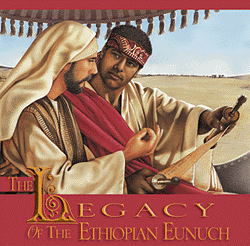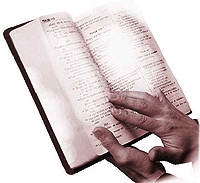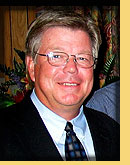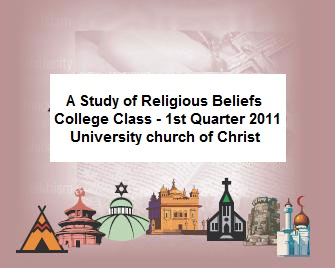Home | About Us | Directions | Bulletins | Sermons & Audio | Cross Of Christ Studies | Classes | Student and Parent Resource Page | Dangers Facing the "Non-Traditional"
The High Priesthood of Christ
by Jefferson David Tant
The High Priest was Israel’s most honored position in, and great care was taken with his consecration. The blood of the offering was applied to the person. art P the ordination is cited in Exodus 29:20-21: “You shall slaughter the ram, and take some of its blood and put it on the lobe of Aaron's right ear and on the lobes of his sons' right ears and on the thumbs of their right hands and on the big toes of their right feet, and sprinkle the rest of the blood around on the altar. Then you shall take some of the blood that is on the altar and some of the anointing oil, and sprinkle it on Aaron and on his garments…; so he and his garments shall be consecrated…”.
The significance of this action should not escape us. The whole person and career of the priest were thus brought under power of the blood. He had a blood-stained ear that he might hear and obey the divine injunctions, that he might understand the word of Jehovah and interpret it to the people. His will was brought into subjection to the will of His Lord that he might be a faithful minister in things pertaining to God. He had a blood-stained hand that he might correctly execute the services of the sanctuary and the duties of his great office. He also had a blood-stained foot that he might walk blameless in the statutes of the Lord, and tread the courts of the Lord's house as the obedient servant of the Most High. Sacrificial blood, the blood of atonement, is here, as everywhere else, the foundation in all our relations with God.
There was an Old Testament priest who bore a resemblance to Christ—Melchizedek, a somewhat mysterious character, who suddenly appears on the scene and then just as suddenly disappears. As Abraham returned from rescuing Lot, he was met by Melchizedek. “And Melchizedek king of Salem brought out bread and wine; now he was a priest of God Most High. He blessed him and said, ‘Blessed be Abram of God Most High, Possessor of heaven and earth; And blessed be God Most High, Who has delivered your enemies into your hand.’ He gave him a tenth of all” (Gen. 14:18-20). The lesser pays homage to the greater, thus the implication is that Melchizedek was of a higher order than Abraham. Christ’s priesthood is likened to that of Melchizedek. “The LORD has sworn and will not change His mind, "You are a priest forever According to the order of Melchizedek" (Psalm 110:4; Heb. 5:6, 5:10, 6:20).
The point is that the Aaronic priesthood descended from Abraham, and thus the Aaronic priesthood was a lesser priesthood than that of Melchizedek/Christ. Christ’s eternal priesthood is in a figure also similar to Melchizedek’s in that so far as the record shows, Melchizedek is eternal, in that we have no record of his birth or death. Obviously, we know he was a mortal being, but in a figure he was without beginning or end.
The priests of Israel were but dim shadows of the one Great High Priest of God, the Lord Jesus Christ. Without drawing out at length the parallelism between the type and the antitype, we may sum up in a few brief sentences the perfection found in the priestly character of Christ: (1) Christ as Priest is appointed of God (Heb 5:5). (2) He is consecrated with an oath (Heb 7:20-22). (3) He is sinless (Heb 7:26). (4) His priesthood is unchangeable (Heb 7:23-24). (5) His offering of a blood sacrifice is perfect and final (Heb 9:25-28; 10:12). (6) His intercession is all-prevailing (Heb 7:25). (7) As God and man in one Person He is a perfect Mediator (Heb 1:1-14; 2:1-18). (8) As the Old Covenant was dedicated with blood (Ex. 24:8; Heb. 9:18), Christ inaugurated the New and Better Covenant with his own blood (Lk. 22:20; Heb. 13:20).
For 2,000 years Christians have come together every first day of the week to celebrate our High Priest, and reflect upon the suffering he endured that he might attain this high office when he was crucified on the cross. His perfection and the completeness of his sacrifice is seen in the contrast between the priests of the Old Testament and the priesthood of Christ.
“By this will we have been sanctified through the offering of the body of Jesus Christ once for all. Every priest stands daily ministering and offering time after time the same sacrifices, which can never take away sins; but He, having offered one sacrifice for sins for all time, SAT DOWN AT THE RIGHT HAND OF GOD” (Heb. 10:10-12)
We note that the Aaronic priests could, in a sense, never sit down, for they had to continually offer sacrifices, day after day, week after week, year after year. But when Christ made the ultimate sacrifice, he “sat down,” for his work was done. Let us remember this with thanksgiving when we partake of the Lord’s Supper. — jdtant3@juno.com
Other Articles by Jefferson David Tant
Is "Once Saved Always Saved" a Bible Doctrine?
Confirmation
The Superiority of Christ
Studies by David Tant
![]() Would you like
others to read this article?
Would you like
others to read this article?







